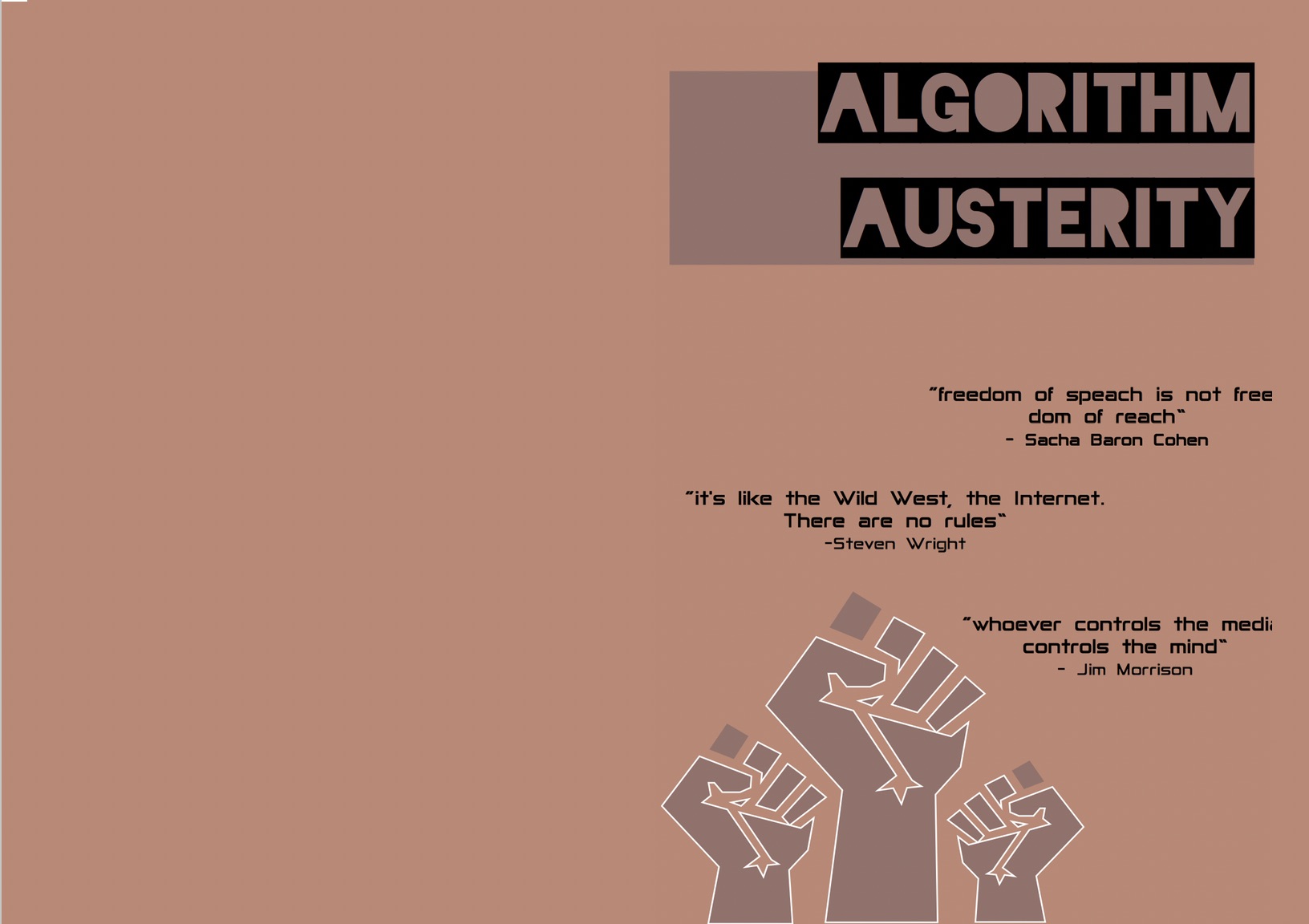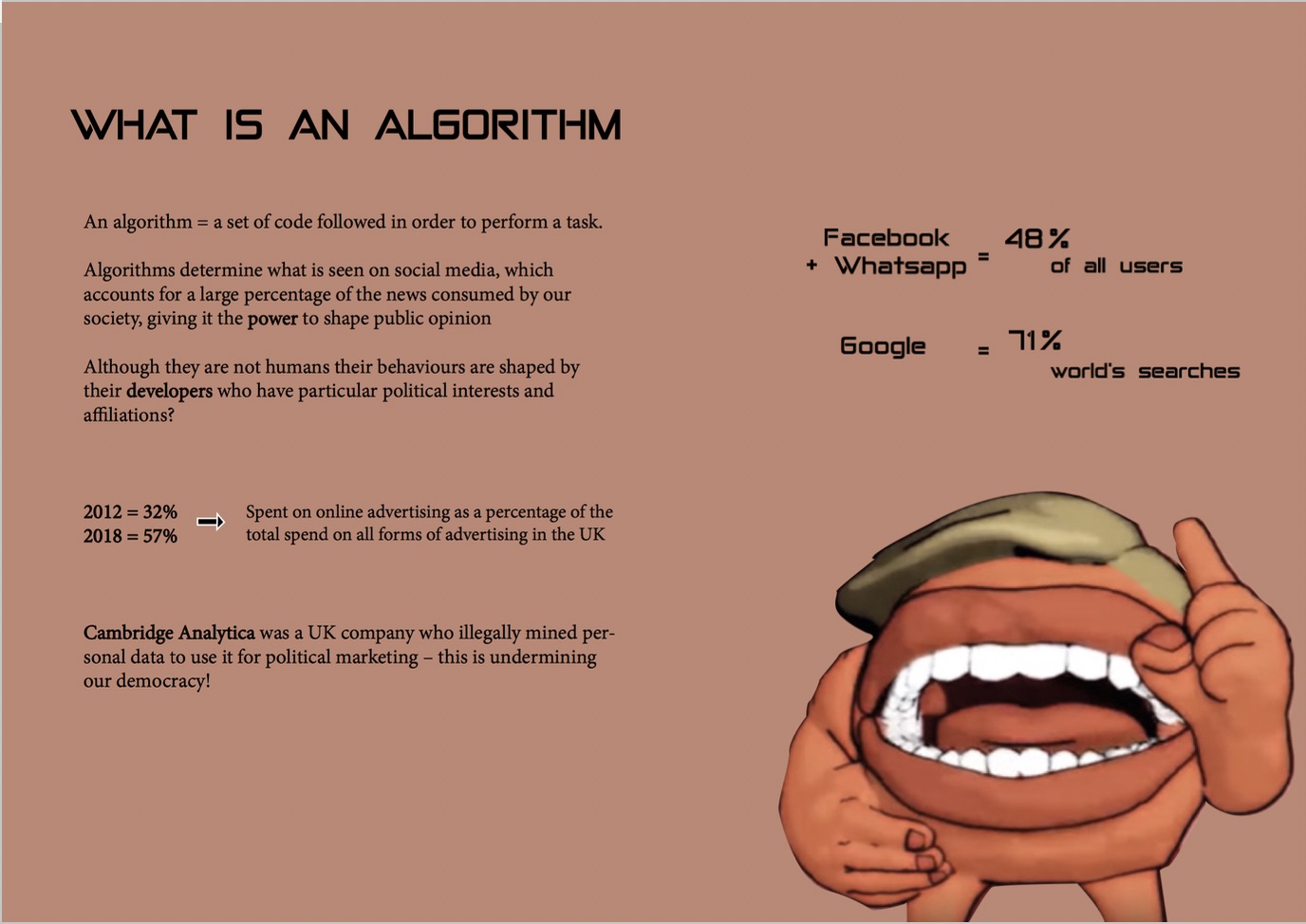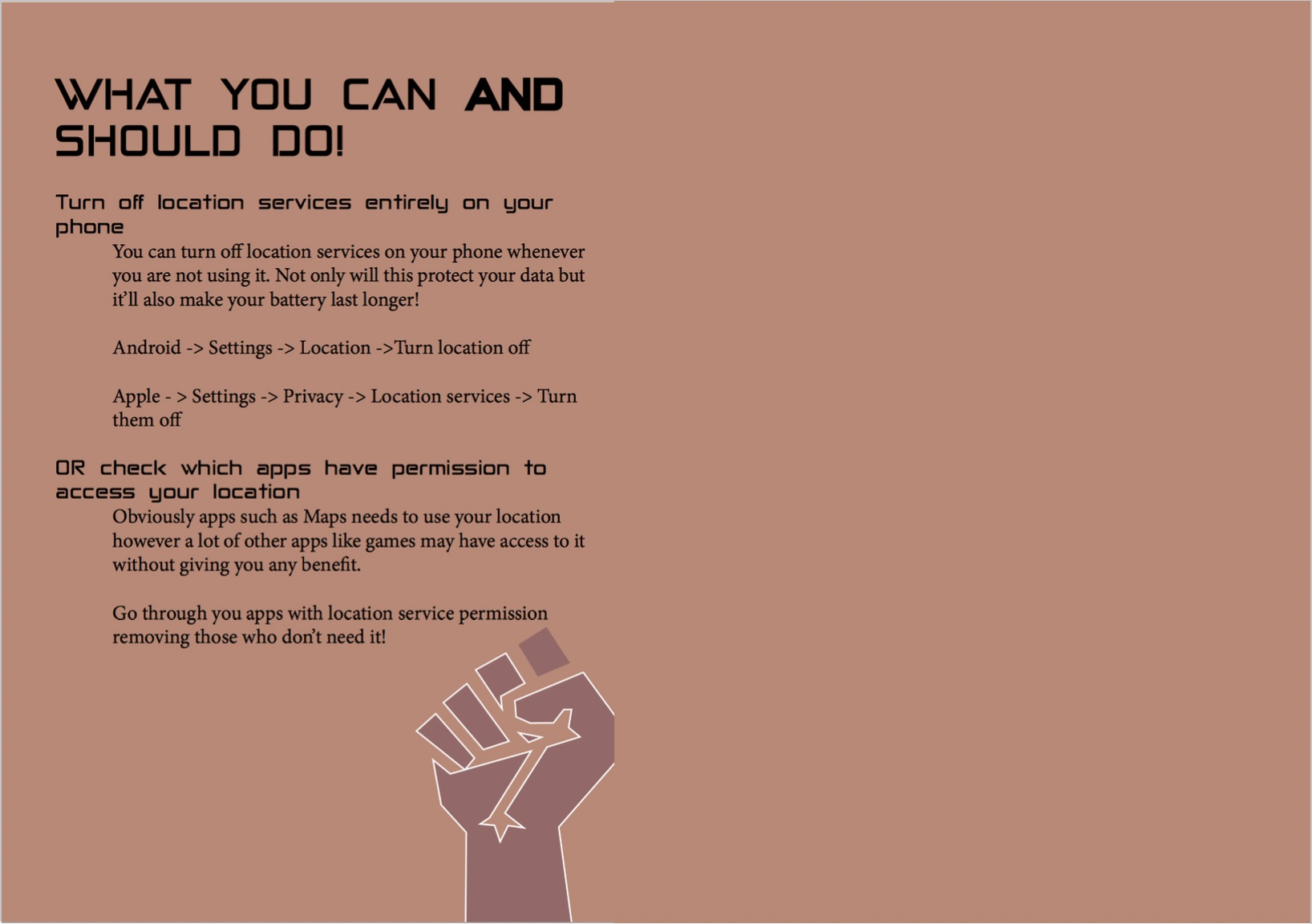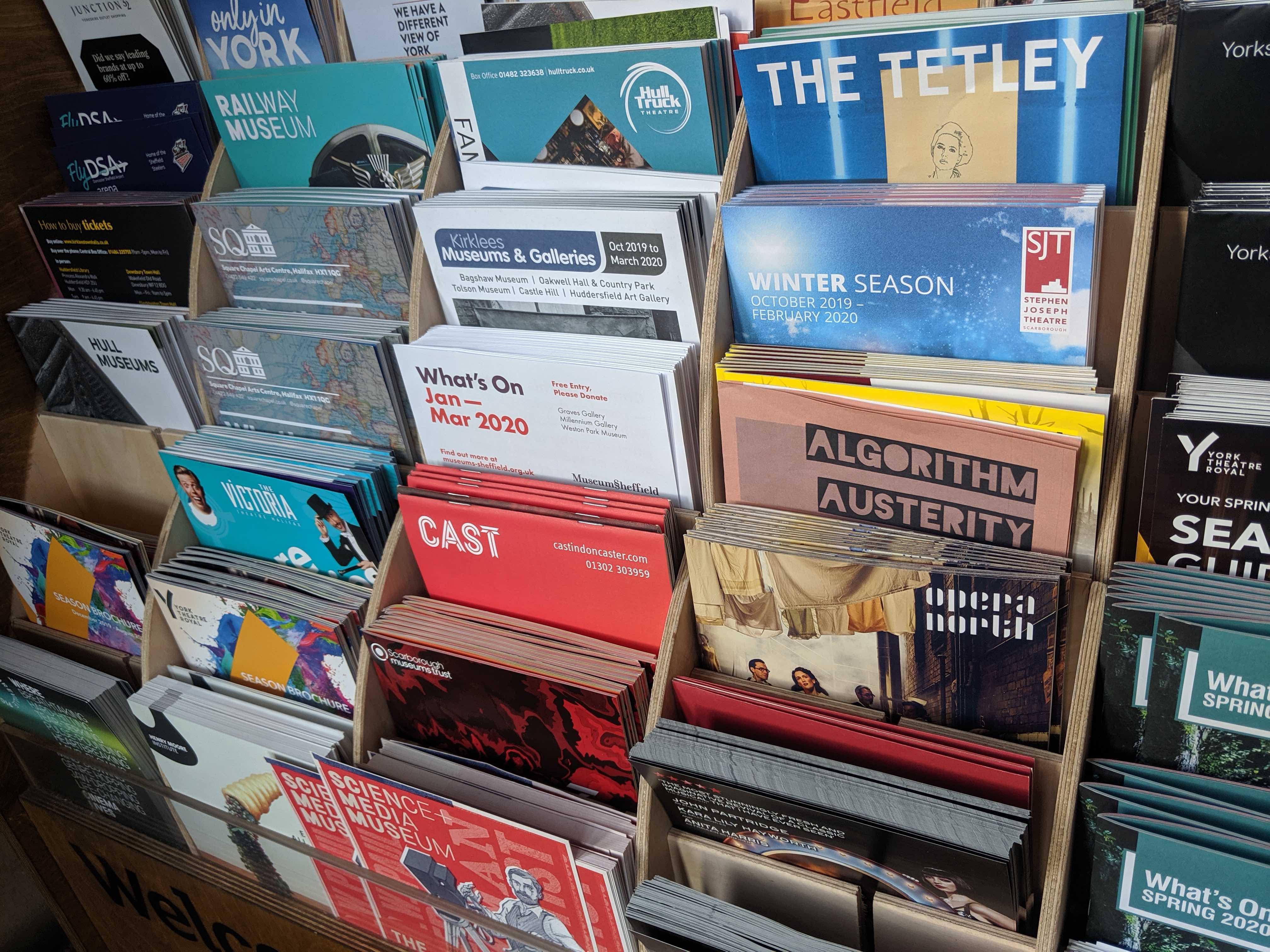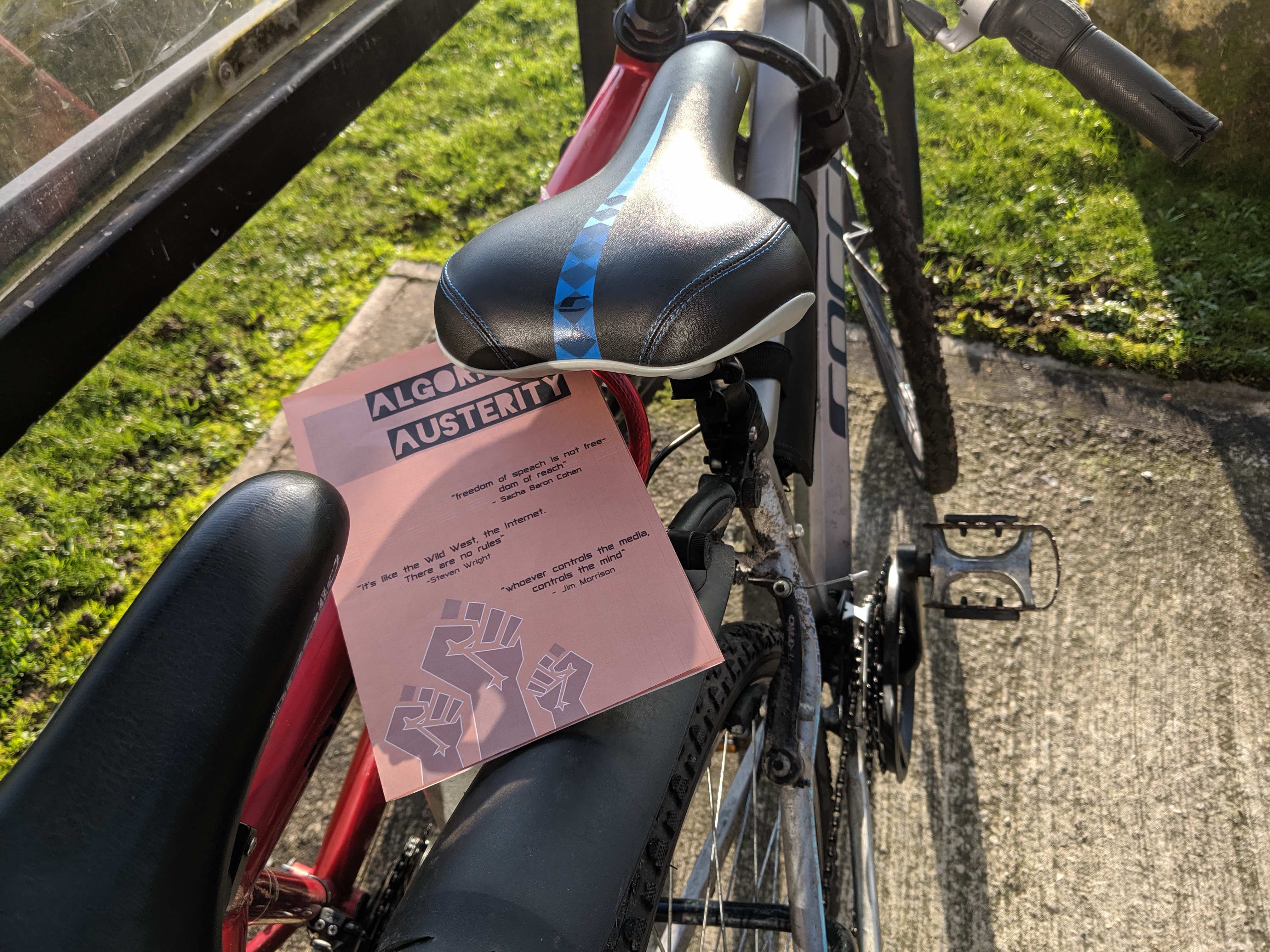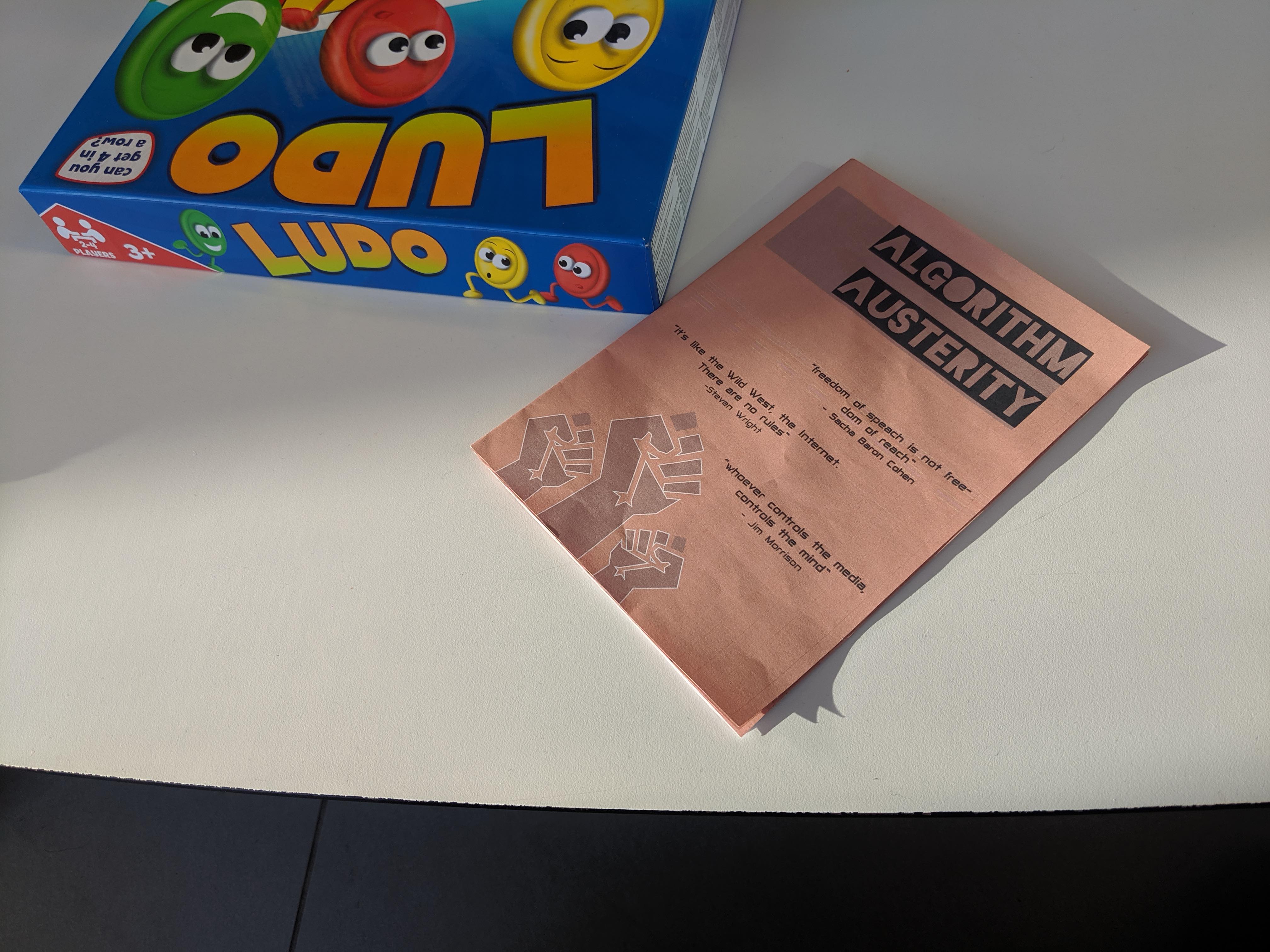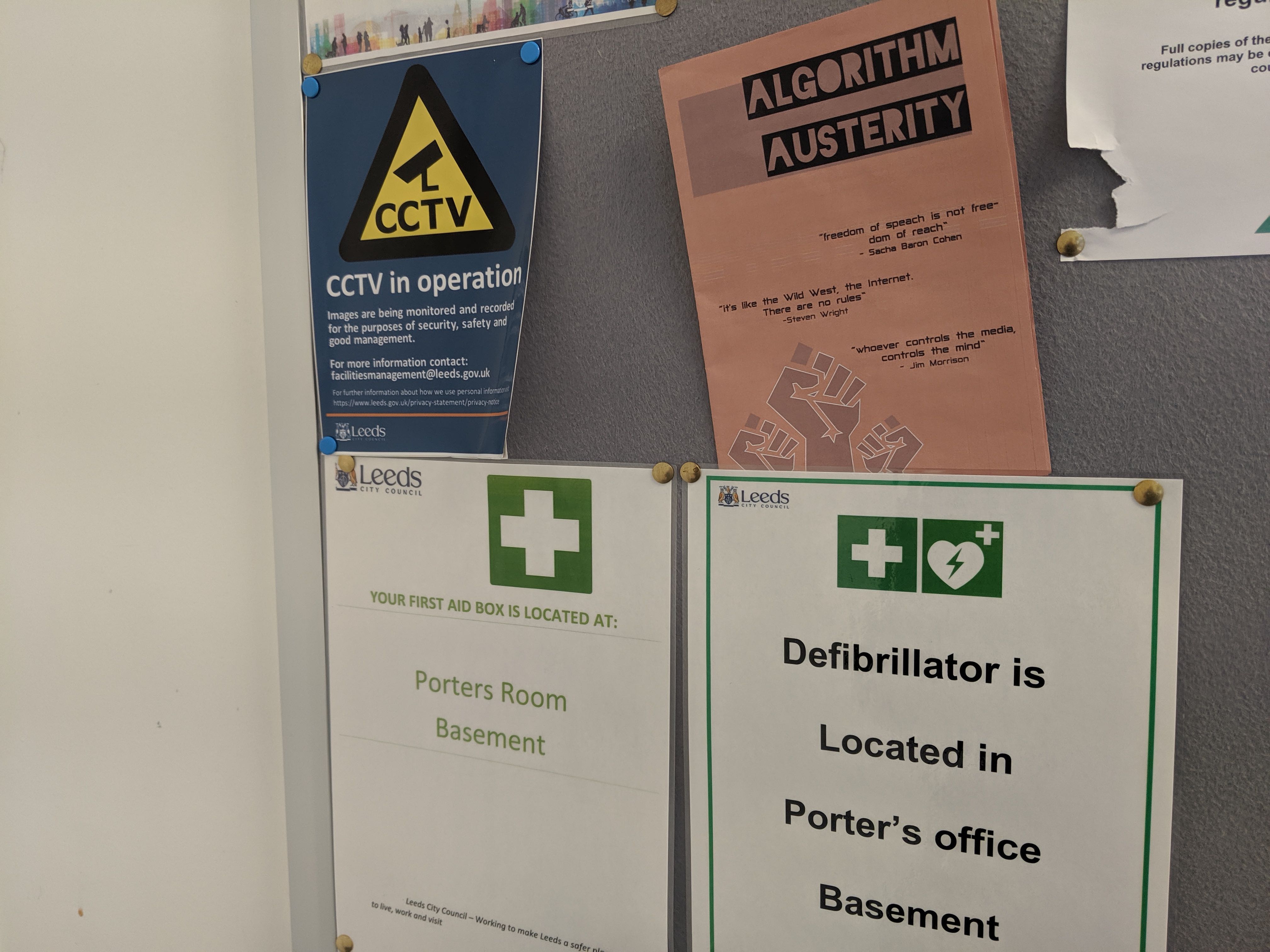x
ALGORITHMIC AUSTERITY
THE ISSUE
The growth in targeted advertising and the impact of this on politics in the UK.
READINGS n RESEARCH
INTRODUCTION
Throughout my lifetime (despite only being 20 years of age) I have noticed huge changes in the nature of advertisements. The number of social media platforms has increased accompanied by the amount of advertising, with the advertisements becoming increasingly
targeted and personalized
to the individual viewing them.
“The news media are in crisis. Advertising has shifted from print towards targeted online ads” (Fuchs, 2018, p. 71).
“Today we not only have the world wide web and mobile phones, but also Big Data, Google, Facebook, YouTube, Twitter, Flickr, Instagram, Wikipedia, blogs etc. have become important means of information and communication” (Fuchs, 2018, p. 71).
WHAT ARE ALGORITHMS
Algorithms are hugely important in relation to targeted advertising, as they are essential to what is required for this targeting to occur.
Algorithms are defined as
“encoded procedures for transforming input data into a desired output, based on specified calculations”
(Gillespie, 2013).
The key issue with algorithms is their lack of accountability. Their power and significance cannot be underestimated, and hence the individuals who develop them must be held accountable. “However, these procedures (algorithms) remain
non-transparent
and thus elude scrutiny” (Gillespie, 2018, p. 5)
COMPUTATIONAL PROPOGANDA
Computational Propaganda is a recently devised term in the field of media and communication.
It can be defined as “the assemblage of social media platforms, autonomous agents, and big data tasked with the
manipulation of public opinion
(Wooley, 2016). It is concerned with technologies which are
ideologically inspired
to promote a particular perspective.
IMPORTANCE OF FACEBOOK, INSTAGRAM and GOOGLE
The significance of social media and search engines in our current society is huge, with more and more advertising being conducted on these platforms. Furthermore, the dominant platforms have concentrated ownership which gives much power to a few individuals. Google, Facebook and Instagram are all huge sources of news in society today, highlighting their significance and power.
“
Google
co-founders Larry Page and Sergey Brin own 42.4% and 41.3% respectively of Alphabet’s class B common stock. Page controls
26.6%
of the
voting power
; Brin
25.9%
"(Fuchs, 2018, p. 73).
Google =
71% of the world’s searches.
Facebook and its subsidiary WhatsApp =
48% of users
worldwide of the top 10 social media platforms (Fuchs, 2018, p. 73).
Algorithms determine the ranking
of Facebook’s news feed
and
Google’s search results
, yielding power to the owners of these platforms in deciding the algorithms work, which in turn impacts the news stories that are displayed to a large proportion of the population. This issue is heightened as these algorithms are
Black Box’s
meaning that they are intransparent.
Social media is growing as a news source, becoming the most important informant of news for younger people, highlighting how pressing this issue is:
“In respect to the 2016 US presidential election, the group of 18-29-year-olds considered social media the most important news source” (Fuchs, 2018, p. 73).
URGENCY

(This image is from the Ofcom Communications Market Report from 2019 and shows the advertising spent for each type of media)
The information shown above highlights the urgency of addressing targeted advertising. In
2012 £6 billion
was spent on online advertising in the UK, which was 32% of the total spent versus
2018
where
£13.4 billion
was spent on online advertising (57% of the total). The level of online advertising has almost doubled over this 6 year period, with a large proportion of this being targeted advertisements.
x
DEVELOPMENT
POLITICS… HOW IS THIS RELEVENT
“What happens when the techniques of the marketing industries become the tools that influence our democracies”(Tactical Tech.)
The key difference in this shift from advertising on television and newspapers to that on social media is the ability to target a much more specific audience. “On social media, multiple audiences can be targeted at once because there are micro and niche publics” (Fuchs, 2018, p. 76).
Data can be used to profile individuals, allowing politicians to target these micro and niche publics. “This profile helps them figure out which candidates or issues you would find most appealing, in order to target you withvmessages tailored to you.” (Tactical Tech) This is changing the nature of politics in the UK, with targeted advertisements becoming “an indispensable tool in any campaigns electoral kit” (Neudert L.M., 2019).
“The effect of such micro-targeting is that we are no longer able to see what is going on ‘next door’, which in turn creates advertising echo chambers. This becomes especially problematic when these techniques are used to discriminate or to send conflicting messages to different audiences” (Neudert L.M., 2019).
Issues surrounding the usage of data has been brought to the public’s attention in the case of Cambridge Analytica, which was “the British consulting firm that illegally mined personal user data from millions of Facebook users and used it for deceptive political marketing” (Neudert L.M., 2019). For more information of this case study please watch The Great Hack (2019), a documentary on Netflix.
“Gaining online attention and visibility requires money, time and labour-force. Everyone can in principle produce content online, but in a capitalist society only a minority attracts online visibility and attention.” (Fuchs, 2018, p. 78). When relating this to politics, in particular political election campaigns, this yields more power to those with money than in previous elections.
This issue is further heightened by the role of political bots in the online debate. “A bot is a piece of software code that performs certain online behaviour based on an algorithm.” (Fuchs, 2018, p. 80). Although these bots aren’t humans, their behaviours are shaped by their developers who have particular political interests.
“Kollanyi, Howard and Woolley have analysed around 10 million tweets mentioning Hillary Clinton and Donald Trump at the time of the third US presidential election debate. They found that political bots posted 36.1% of the pro-Trump tweets and 23.5% of the pro-Clinton tweets” (Fuchs, 2018, p. 80).
With the growing importance of social media as a news source public opinion is increasingly shaped and influenced on these platforms. This gives political bots the power to manipulate and influence the public perception. These search and ranking algorithms are intransparent preventing them from facing scrutiny.
One article I read came up with potential actions to address the issues technological changes have caused the UK democratic system, which covered 4 key areas. The first area is civil society “which includes stakeholders in journalism, research, and various civic organizations and civil rights groups” (Neudert L.M., 2019). The second is government and third is industry which includes companies involved in social media and data analytics. The fourth is political parties “which includes their candidates, campaign staff, and all registered campaigners” (Neudert L.M., 2019). Below is a summary of these actions.
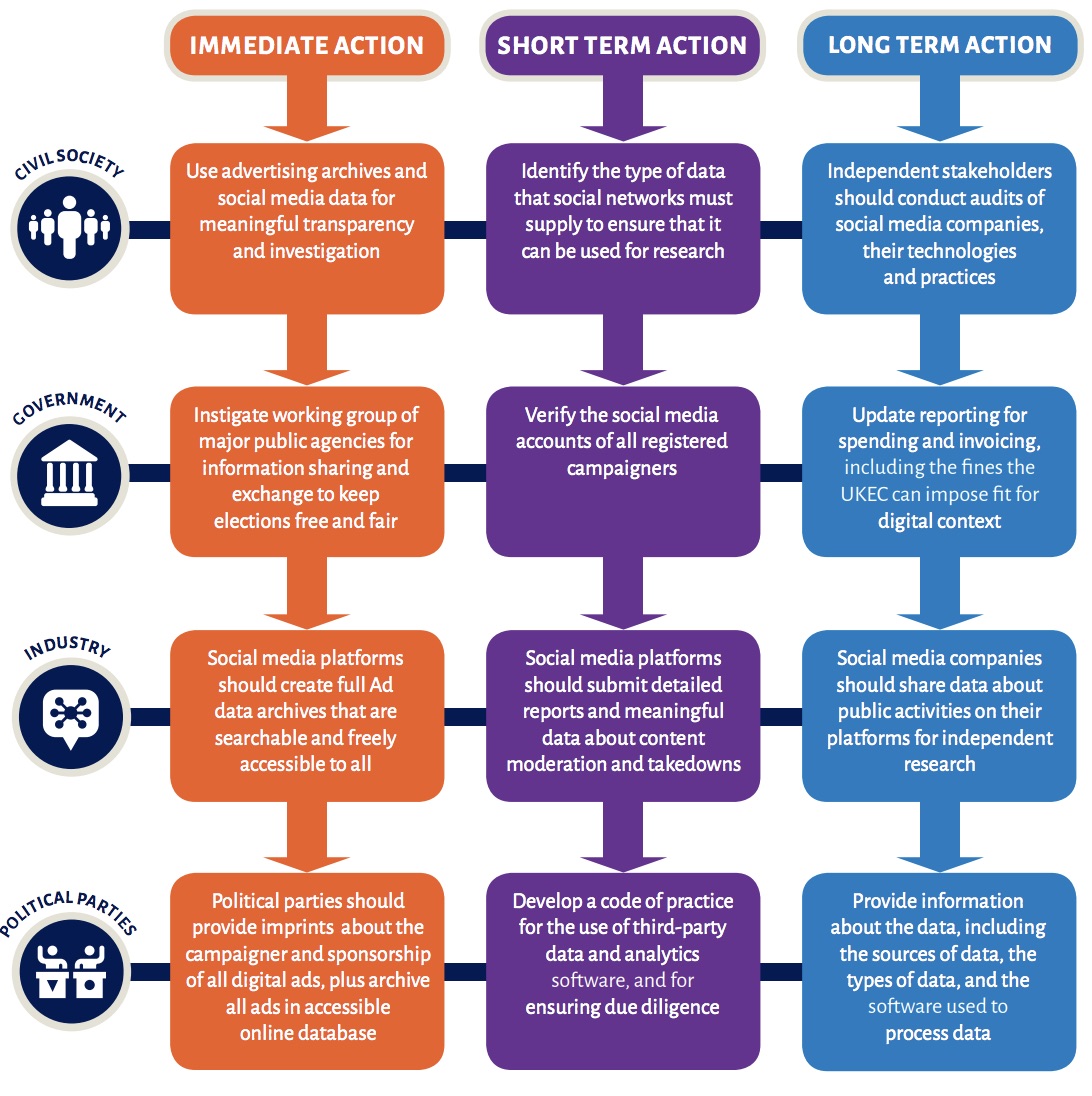
On reflection I began to try to narrow down the focus of my project, by considering how I could make the greatest impact. The two key areas which I believe can be influenced are firstly those involved in the creation and implementation of targeted advertising, whether that be politicians or web developers and secondly those who consume the targeted advertisements. Due to my limited resources and contacts I decided that my influence in the first area would be limited, so I have decided to focus on the consumers.
IMPORTANCE OF LOCATION
As discussed there are growing concerns about the “use of data-driven profiling to subvert the democratic processes.” (Neudert L.M., 2019)
“Increasingly, political actors in the United Kingdom rely on social media ads and other forms of sponsored content on platforms like Facebook, Instagram, Snapchat, and YouTube to target citizens with political messages.” (Neudert L.M., 2019) All these social media platforms, as well as Google, ask to use your location with many people giving these apps their permission.
This gives them data about where you live and places you visit which allows geotargeted advertisements. Furthermore, in the UK First Past the Post (FPTP) is used as our voting system. Due to the way this system works the importance of an individual’s location is hugely significant in electoral campaigns.
The FPTP system works as follows;
The country is divided into constituencies based on where you live, each constituency has one seat in the House of Commons, constituencies select one candidate based on plurality (so the candidate who gets the most votes wins regardless of the percentage of votes they achieve).
Under FPTP the candidate with the most votes wins the seat, regardless of whether lots of votes are cast for other parties. This puts an increased importance on those who vote in constituencies which are ‘swing seats’.
Fermanagh and South Tyrone had a majority of 57 votes in the UK 2019 election.
This is in huge contrast to Hackney South and Shoreditch which has a majority of 33,985 votes in the same election. (BBC)
Both parties that won these constituencies gained one seat despite the difference in the number of votes they received.
Therefore, those voting in constituencies with a large majority are pretty insignificant. This means that data on your location is hugely valuable for electoral campaigns, as it allows them to focus resources on voters in areas which are ‘swing seats’.
Furthermore, your location allows them to target you with specific messages which are more likely to appeal to you. “Your presence at a particular pub on a Friday night or a place of worship, for instance, may convey information about your attitude towards certain issues” (Tactical Tech).
x
THE IDEA
As I decided to focus on those who consume targeted advertising, I considered how I should further narrow the focus of my project. I decided that an educational and informative approach would have the greatest impact through raising awareness of the issue. I considered different mediums to access the public, deciding that an easy read leaflet would be the best fit, using simple English to ensure it is accessible to anyone, as well as making it clear and comprehensive. Once made I could then print out copies of it and leave these in public places, such as on buses, trains, GP waiting rooms etc where individuals who are curious may pick it up and read it, and hopefully these leaflets would circulate, hence raising awareness.
However, with the topic being so broad and so many areas which could be discussed I decided to focus on location services. I targeted this as your location yields so much information about you, as well as being something which is reasonably easy for people to change on their settings. I therefore hoped that the leaflet would inspire people to make this change.
AIMS
My aim of this project is to educate, inform and raise awareness of how your location data is used for geotargeted advertisements, encouraging readers to turn off location services.
x
PRIMARY RESEARCH
I decided to conduct some primary research to support the project. I came up with 5 short ‘Yes’ or ‘No’ questions. Through these I wanted to find out whether individuals receive news on social media, as if so this has a high chance of being geotargeted. Whether Facebook, Instagram and Google are their primary sources of news, as this would suggest a very small number of individuals control what news they see as well as tracking of their location (unless location services are turned off). Whether they recall seeing targeted political advertisements in the past. Whether they make a conscious effort to limit data collected about themselves, in an attempt to assess how aware individuals are about the usage of their data. Finally, whether they have their location services turned on, to assess how aware individuals are about the significance of the location services.
All questions had between 170-180 responses.
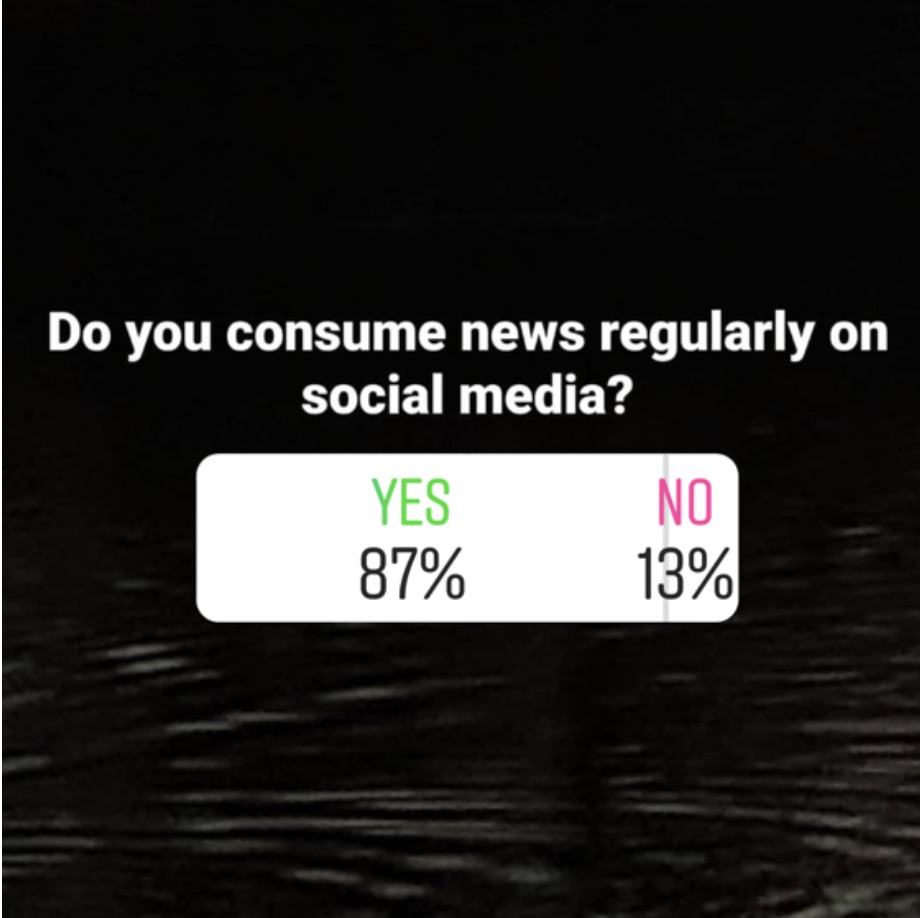
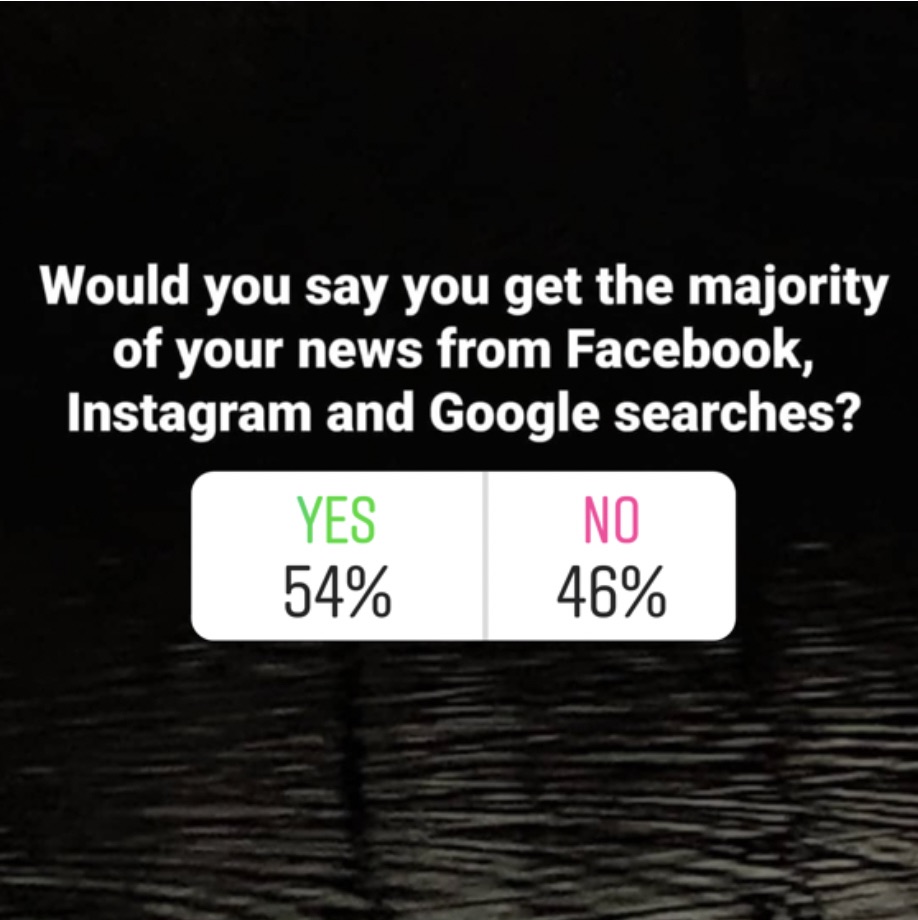
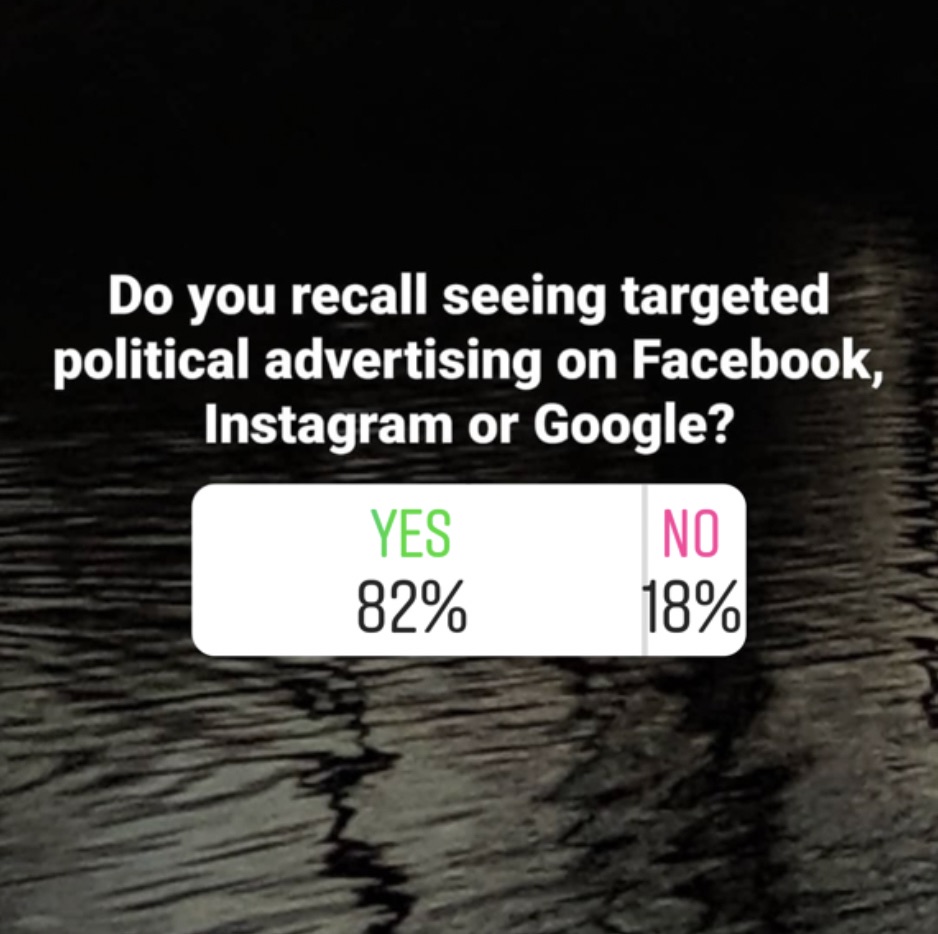
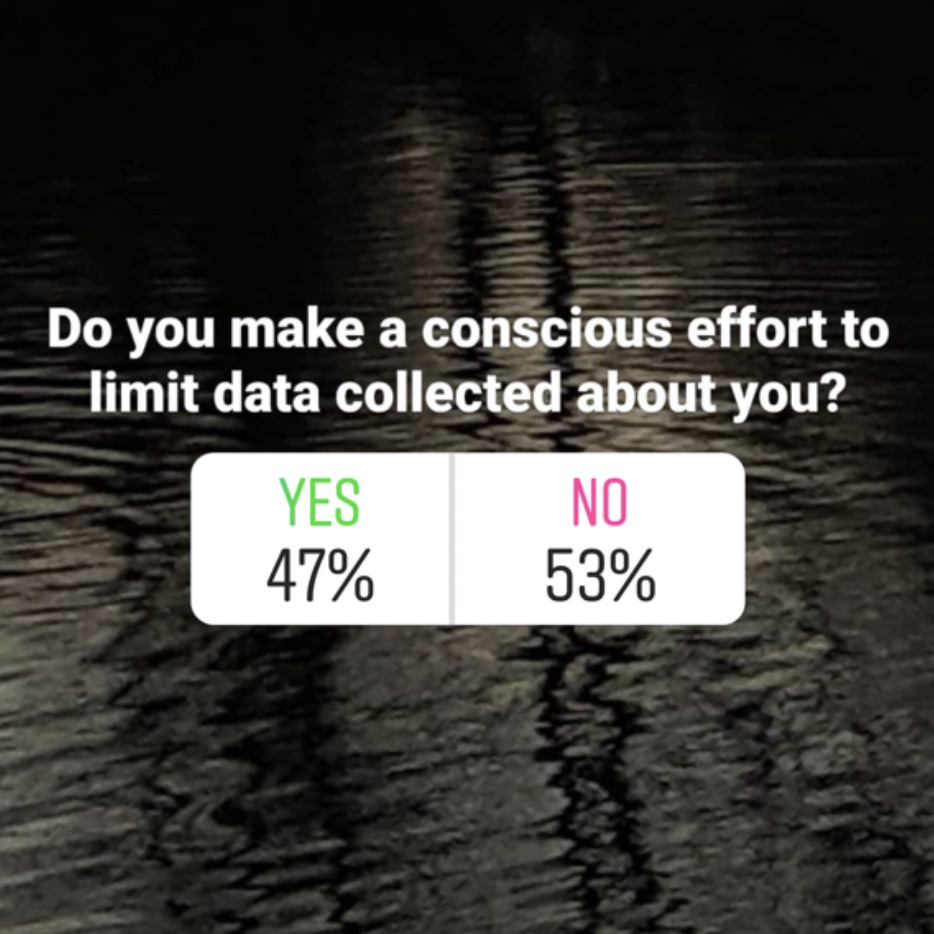
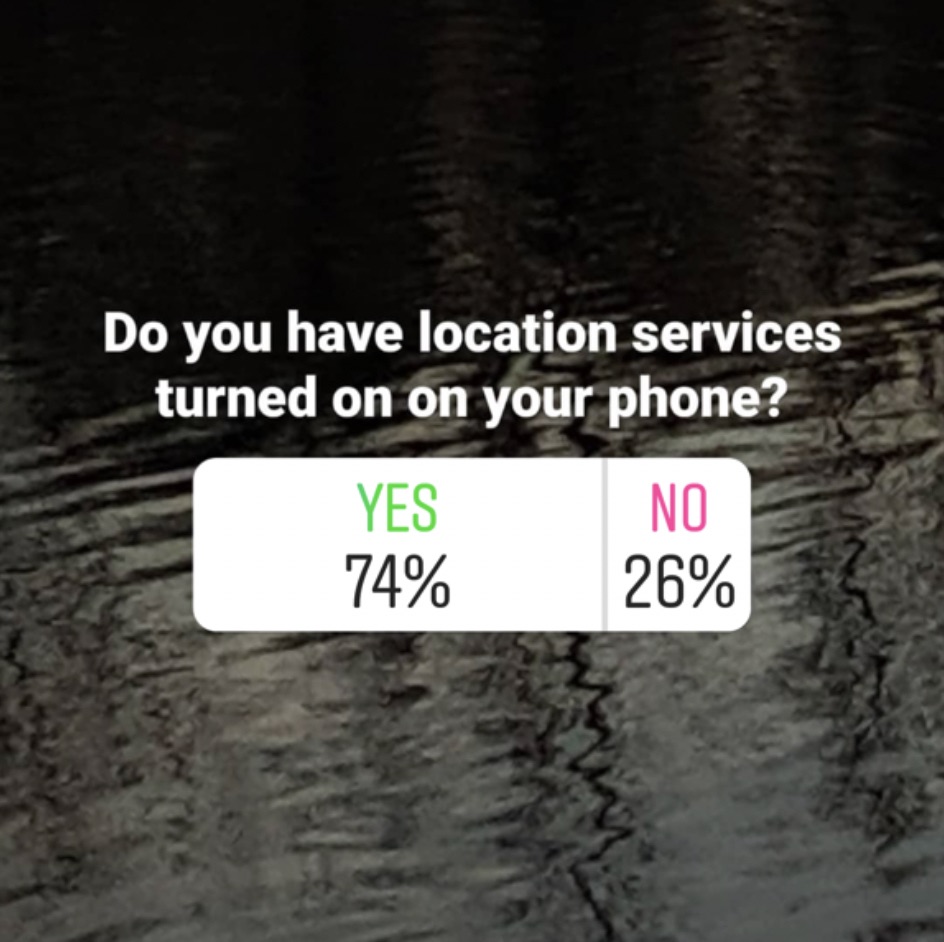
Slightly ironically, I decided to do my survey on social media as this would allow me to reach as many people as possible. I decided to use Instagram as the platform as it allows you to post polls on your story so those who view your story can vote in them. This has the obvious limitation that everyone answering the survey is an active user of social media, however I decided that this would still be more valuable than making a survey on a survey website, as I believed I would not get as many responses. Furthermore, the only easy way I have to share the survey would be through social media.
Please take note that those participating in the survey are all from my social circle. The majority of them are from the UK (which is okay as my project has a UK focus). However, most are of a similar age to me, with many being in higher education and the majority being middle-classed. Furthermore around 50% of people who viewed the story actually responded to the polls which was interesting, suggesting that either those more interested in the topic or those who were more comfortable sharing information answered the questions. These factors obviously have key limitations to the data I obtained, however I still thought the information collected would be a valuable insight for the project.
x
INSPIRED BY...
Bibliography
Fuchs, C., 2018. Propaganda 2.0: Herman and Chomsky’s Propaganda Model in the Age of the Internet, Big Data and Social Media. In: J. B. D. a. K. J. Pedro-Carañana, ed. he Propaganda Model Today: Filtering Perception and Awareness. London: University of Westminster Press, pp. 71-91.
Gillespie, T., 2013. The Relevance of Algorithms. In: s.l.:MIT Press.
Gillespie, T., 2018. Custodians of the Internet Platforms, Content Moderation, and the Hidden Decisions That Shape Social Media. s.l.:Yale University Press.
Neudert L.M., H. P., 2019. Oxford Technology and elections Commisions, ready to vote: elections, technology & political campaigning in the united kingdom. [Online]
Available at: https://oxtec.oii.ox.ac.uk/wp-content/uploads/sites/115/2019/10/OxTEC-Ready-to-Vote.pdf
[Accessed 6 January 2020].
Tech, T., n.d. Tactical Tech. [Online]
Available at: https://tacticaltech.org/#/
[Accessed 4 January 2020].
Wooley, S. H. P., 2016. Political Communication, Computational Propaganda, and Autonomous Agents. International Journal of Communication, Volume 10, p. 4882–4890.
Pirak, P., 2017. Noam Chomsky - The 5 Filters of the Mass Media Machine. [Online]
Available at: https://www.youtube.com/watch?v=34LGPIXvU5M&list=LLl9Z1SYbZEJWOUC-ismwCHQ&index=2&t=0s
[Accessed 4th January 2020].
school, W., 2019. W3schools template. [Online]
Available at: https://www.w3schools.com/w3css/tryw3css_templates_restaurant_modal.htm
[Accessed 12 January 2020].


